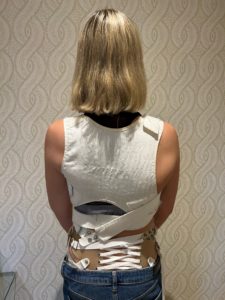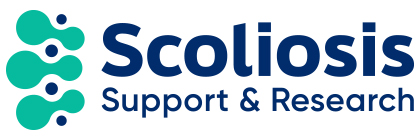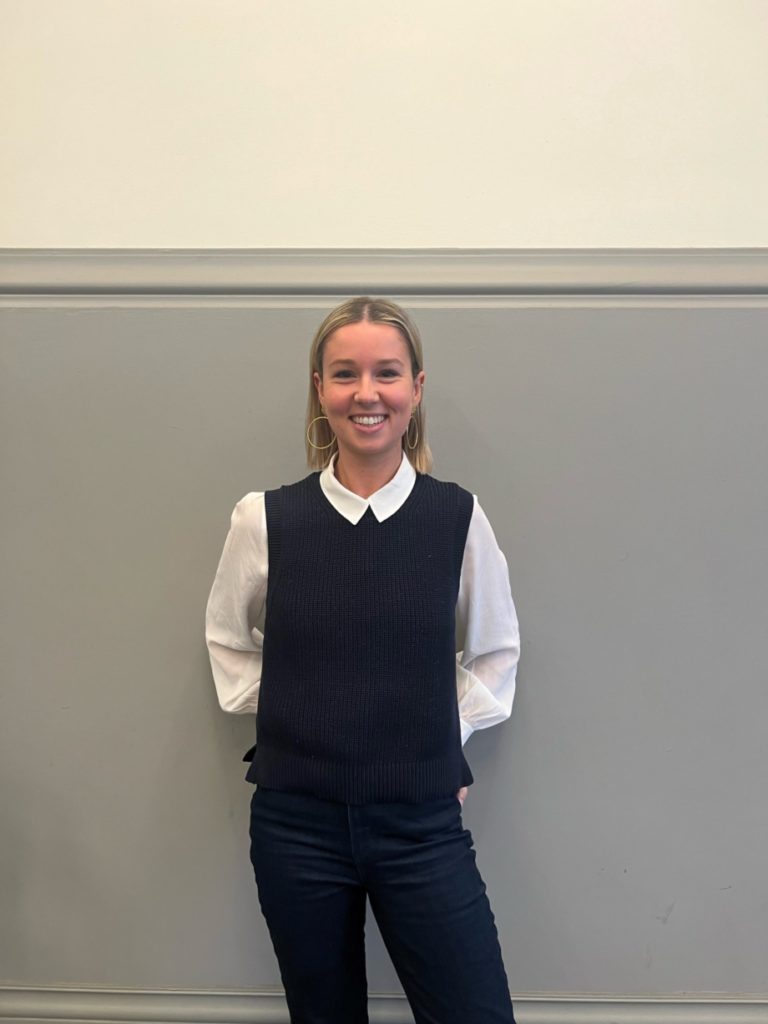Monday – Friday 9am to 5pm
Milly Wiggin
After complaining for years about chronic nerve pain down my arms and back, when I was 13, I went to my local osteopath where she suspected that I had scoliosis. Scoliosis is a curvature of the spine and in my case, it was idiopathic, meaning the cause was unknown. I immediately was taken to Oswestry hospital where an X-Ray of my spine showed that I had a 25-degree curve, and the consultant told me that I needed spinal fusion surgery in order to straighten my spine. A serious spinal curve can limit the quantity of available space inside the chest, thus impairing lung function and can have a significant effect on your major organs. Therefore, surgery is seen as the only method to resolve it. During the surgery, rods, wires, hooks, or screws are attached to the backbone, in an attempt to straighten the spine. Small bone pieces are then placed over the spine, so that they grow united with the spinal bones, so literally fusing into the correct position. They were also going to require taking out part of my ribcage to use on my spine. As you can imagine, this didn’t sound too appealing. Mum, Dad, and I, all being relatively stubborn (to say the least) decided that we would do everything in our power to prevent me from having the operation and 14 years later I am still operation-free. So here is how we got to where we are today…
Following my consultation at Oswestry Hospital, my Mum spent every waking hour researching every single alternative treatment for scoliosis. At that time, we had never heard of the condition, and we were introduced to only one other person who we got put in touch with who had been diagnosed. This as you can imagine made research and our ability to come to a decision quite challenging. She eventually came across a place in London called Scoliosis SOS. The following Monday I found myself spending the next month at their clinic doing Schroth spinal exercises and treatment for 8 hours a day in a room full of individuals who also had severe scoliosis. It was the most traumatic, emotional, and awful month of my life. I have only come to terms with the damage it did to my mental health and body image over the last two years. A vulnerable 13-year-old girl spending 8 hours a day for a month staring at your abnormally wonky body in a room full of bars and mirrors was always going to be damaging. Following the course, I then spent 45 minutes every morning doing specialist scoliosis exercises. Don’t get me wrong, the exercises massively improved my posture and subsequently the way my back looked. However, the clinic then spoke with my local newspaper in Shropshire claiming to have ‘got rid of the problem’. This language was misleading and detrimental to the narrative around scoliosis. There is, unfortunately, no cure for scoliosis, the only option is to have the spinal surgery. Once your spine reaches a certain cob-angle (degree), there is no way that it can improve unless you are operated on. In the two years that followed my time at Scoliosis SOS, my spine continued to excessively curve and rotate as I continued to grow. During my annual check-up at the Nuffield in Cambridge, the X-Ray showed that my spine had regressed to 52 degrees, and I now had two quite severe curves in my spine. Again, my consultant told me that I should be operated on. Next thing you know, Mum was back on her research train and came across the SpineCor back brace. Off to Sheffield it was where I met with an amazing orthotist. I then spent the next two years in a SpineCor back brace. This was a dynamic brace that I wore for 20 hours of the day. The idea was that it would enable me to live a more relatively normal lifestyle than with the traditional Boston brace. However, it was a serious challenge trying to find clothes that would fit over the top, which weren’t disgusting, albeit whilst being a 15-year-old girl. To really top off my look, the brace caused such bad sores and cuts on my body that I had to wear Spanx underneath. As you can imagine, this was not a pretty sight. The idea of the brace was that it would halt the regression of my spine whilst I was growing.

Following my brace, an X-Ray showed that my back had stabilised and remained at 52 degrees, which was amazing. In addition, once you are fully grown, your spine shouldn’t get any worse. I am now (we hope) out of the woods with regards to my scoliosis regressing anymore. I have spent the past 14 years seeing every type of specialist, surgeon, and doing every type of treatment and exercise possible. Although I am in pain almost every single day and I struggle daily with the way my body looks as my legs are different lengths, my shoulders are wonky, one rib cage protrudes out, my right scapula protrudes out so every time I sit in a chair that has a hard back it is agony. I am also rotated to the right, and those are to name but a few ailments. However, I have never felt so strong and happy in the position that I currently am in and proud of the methods I took to avoid having the surgery. There is no one size fits all with regards to dealing with scoliosis and it really is a case of finding what works for you. In my case, exercise, a brace, and regular treatment works but that does not mean it comes without difficulties. I will be forever grateful to my parents who gave up so much to enable me to see the specialists, and I don’t want to begin to imagine how many miles they have driven me all around the country to go to the very best specialists and hospitals. There are so many people who have been a massive part of my journey, and I will never be able to thank them enough. I know now which types of treatment and exercise work for me, and I hope to continue to live a normal life without having the operation. I have a weekly appointment with a musculoskeletal pain specialist, I have regular massages, acupuncture, physio, I swim, I do reformer Pilates, I play tennis, and I do HITT training. My experience has made me so in tune with my body and how important it is to have the right people on your side whilst moving your body in the right way.
I am delighted to be working with the Scoliosis Association and if my journey and story can help just one person then my work is done. Being a regional representative will enable me to speak to those at the beginning of and throughout their diagnosis and remind people that there is light at the end of the tunnel. It is a hell of a scary time but there are enough people out there who have been through it and hopefully reassure you that you are not alone. My scoliosis is a huge part of who I am, and I am incredibly proud of the place that I have got to with the condition. I have met some of the most amazing people through my diagnosis and built some great relationships along the way. I have learnt a huge amount about myself, and it has given me great perspective in life and commitment to a condition that is not spoken about enough. I am wonky as hell but am so proud of the experiences that I have been through to enable me to get to a point where I can speak out and help others going through the same.
If you would like to talk further about any aspect of scoliosis, SAUK is here to help; please call our helpline or contact us via post or using our e-mail address info@sauk.org.uk.
© 2024 Scoliosis Support & Research | Scoliosis Support & Research is a registered charity no. 1181463
Website design & development by Pedalo

